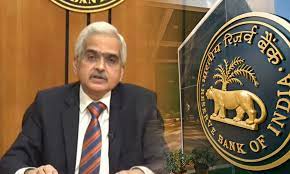RBI hikes repo rate; loan will be expensive

The Reserve Bank of India (RBI) on Wednesday increased the key policy rate repo by 0.40 percent to 4.40 percent. The central bank has taken this step mainly to bring the rising inflation under control. With this move, it will be costly for companies and people to take loans. Retail inflation has remained above the target ceiling of 6 per cent for the last three months.
It was also decided to increase the cash reserve ratio (CRR) by 0.50 percent to 4.5 percent in the meeting of the Monetary Policy Committee (MPC) chaired by Reserve Bank Governor Shaktikanta Das on Wednesday. This will reduce the cash with banks by Rs 87,000 crore. CRR refers to the deposit of the bank, which the banks are required to keep in the form of cash. The increase in cash reserve ratio will come into effect from May 21. This is the first hike in the repo rate since August 2018. Repo is the rate at which banks take loans from RBI to meet their immediate needs.
Highlights of the meeting of the Monetary Policy Committee of the Reserve Bank
- The inflation rate remains above the target’s upper limit of 6 per cent. It is likely to remain high even in the month of April.
- The first hike in the policy rate from August 2018 will increase the cost of borrowings for corporates and the general public.
- Cash reserve ratio increased by 0.50 percent to 4.5 percent, with effect from May 21.
- Food inflation is rising in India due to global commodity prices.
- Logistics costs may increase due to the re-increasing lockdown and supply chain disruptions in major economies.
- The jump in fertilizer prices and other costs have a direct impact on food prices in India.
- Global wheat shortage is affecting domestic prices even if domestic supplies remain adequate.







